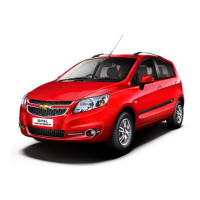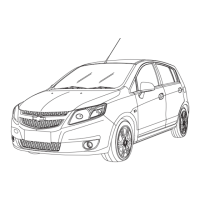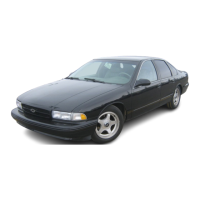Do you have a question about the Chevrolet SAIL Diesel and is the answer not in the manual?
Explains hazard symbols and their meanings for safe operation.
Instructions on how to use safety belts correctly for protection.
Pre-driving checks to ensure vehicle safety and proper operation.
Steps to start the engine using the ignition switch.
Guidelines for achieving a correct and safe seating position.
Instructions on fastening safety belts correctly for protection.
How to correctly use a three-point seat belt.
Important precautions and guidelines for using child restraints.
General instructions for using child restraint systems.
How to choose the appropriate child restraint system for the child and vehicle.
Step-by-step guide to securing a child restraint using ISOFIX anchors.
How to secure a child restraint using the vehicle's seat belt.
Information about the airbag system, its function, and warnings.
Proper seating posture for adults and teenagers to ensure airbag effectiveness.
Explanation of dashboard warning lights, gauges, and indicators.
Overview of the instrument cluster and its various indicators.
How the ABS warning light indicates system status and potential faults.
How the airbag warning light indicates system status and faults.
What the brake system warning light indicates, including low fluid level.
How the battery charging system warning light indicates faults.
What the engine oil pressure warning light signifies and actions to take.
How the malfunction indicator light signals a fault in the emission control system.
What the engine coolant temperature warning light indicates and actions for overheating.
How the seat belt warning light and buzzer alert the driver.
How the air conditioning system cools air and removes moisture.
Procedures for defrosting and demisting windshields.
General notes and precautions for driving the vehicle.
Important warnings about vehicle control and operation.
Procedures to follow in case of emergency situations while driving.
Troubleshooting steps if the engine fails to start.
Actions to take if the engine overheats while driving.
Steps and precautions for starting and operating the vehicle.
Explanation of the different positions of the ignition switch.
How to change gears and operate a manual transmission.
Safe parking procedures, including on slopes and using the parking brake.
Information about the braking system, including disc and drum brakes.
How the ABS system helps prevent skidding and provides maximum braking force.
Important information and recommendations regarding fuel types.
Step-by-step instructions for refueling the vehicle.
Hazards associated with engine exhaust gases.
Function of the catalytic converter and its maintenance.
A checklist for regular vehicle safety and reliability checks.
Checking tire condition, inflation, and treads.
Checking fluid levels in various reservoirs under the hood.
Diagram and identification of engine compartment components.
Importance of maintaining correct engine oil levels.
Step-by-step instructions for checking the engine oil level.
Instructions and precautions for replacing engine oil and filter.
Information about the vehicle's cooling system and coolant.
Importance of maintaining correct brake/clutch fluid levels and its properties.
Step-by-step instructions for adding brake/clutch fluid.
How to check and maintain the power steering fluid level.
How to safely start a vehicle with a discharged battery using jumper cables.
Overview of the scheduled maintenance intervals and service chart.
Details of the standard limited warranty coverage.
Conditions under which the vehicle warranty ceases to exist.
Items and services explicitly not covered by the vehicle warranty.
Owner's obligations to maintain warranty validity.
Necessary documents and procedures for warranty claims.
Warranty coverage for vehicle emission control components.
Situations where the vehicle warranty is not applicable.
| Brand | Chevrolet |
|---|---|
| Model | SAIL Diesel |
| Category | Automobile |
| Language | English |












